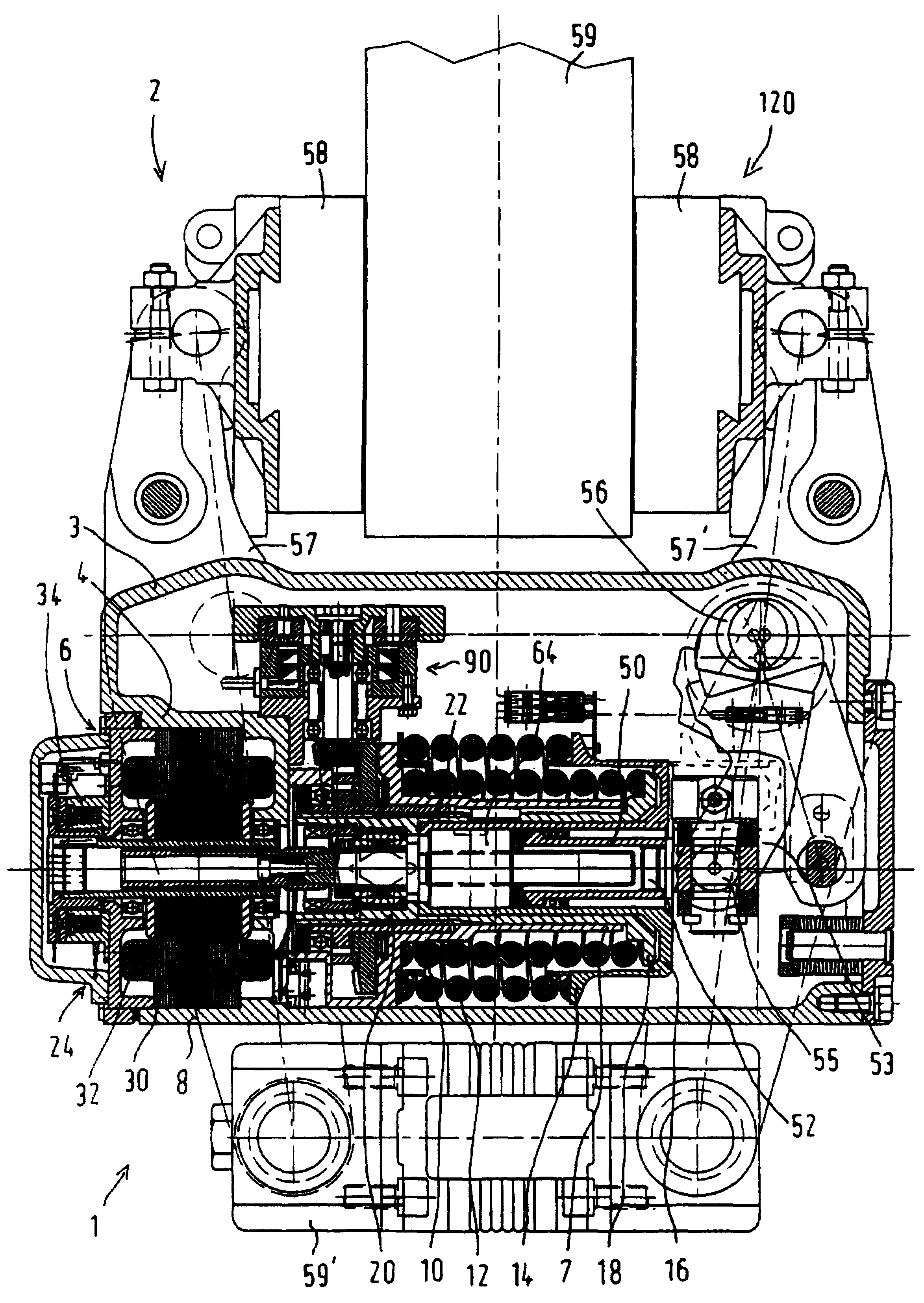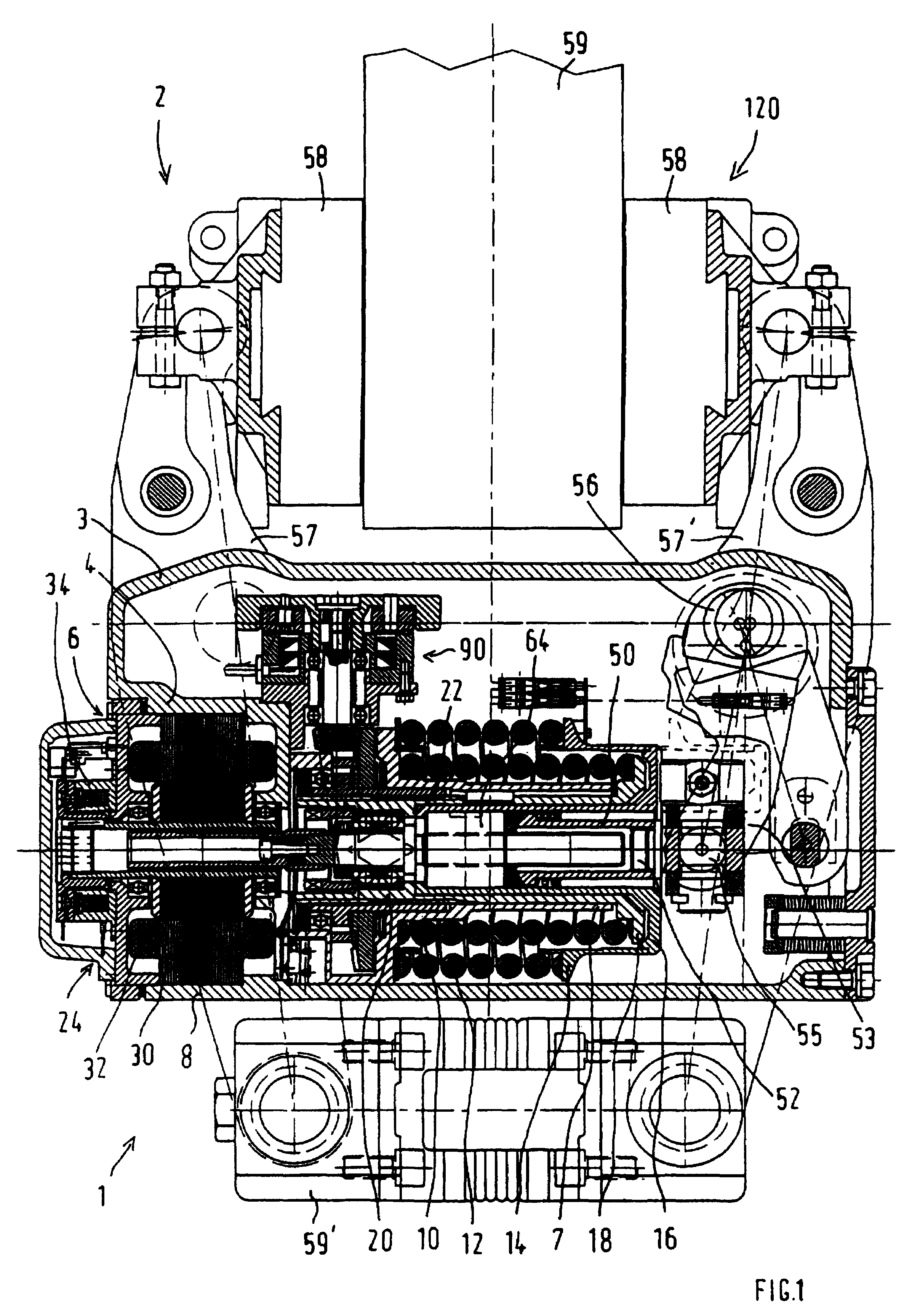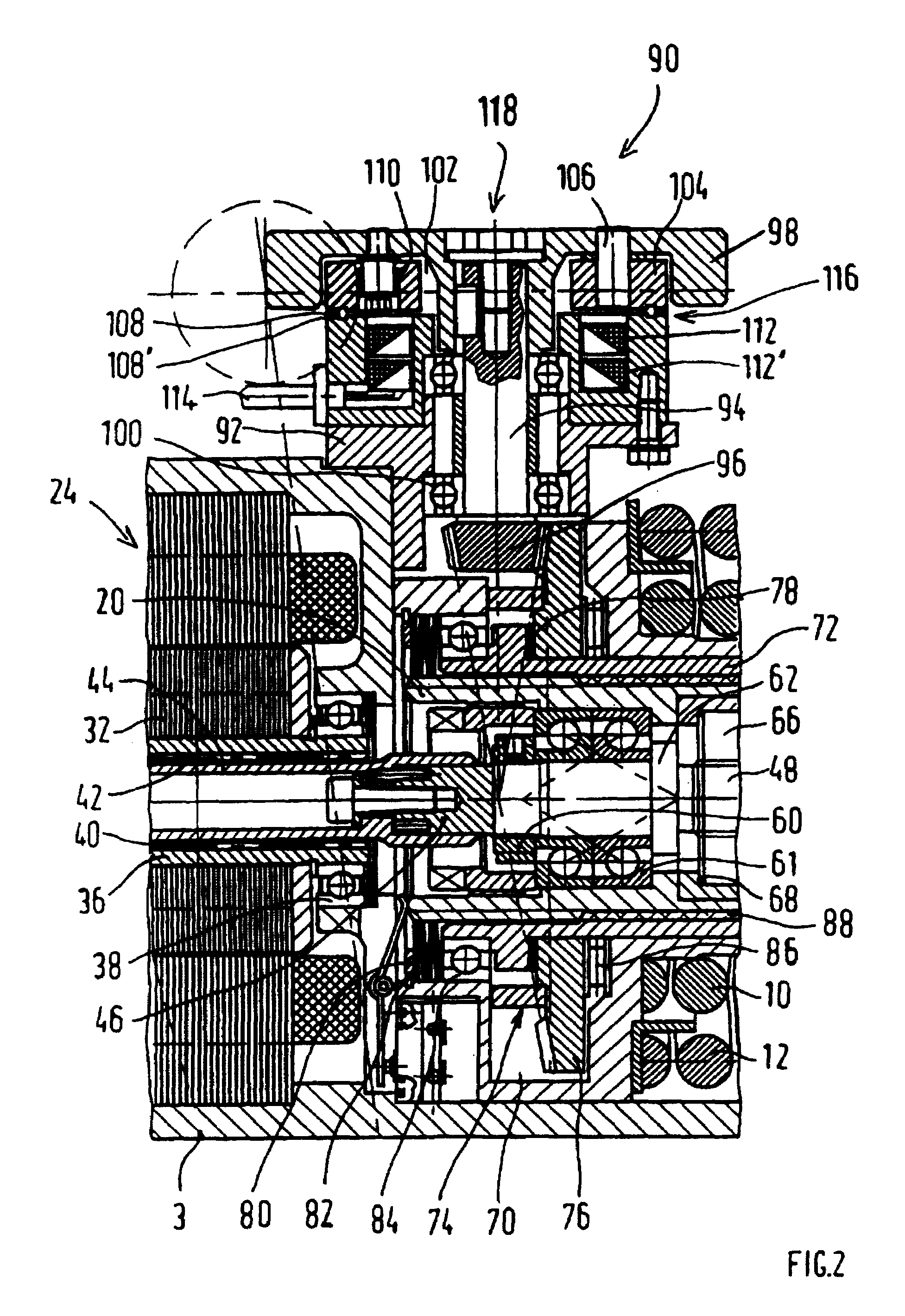Brake actuator comprising an energy accumulator and an inertia weight
a technology of inertia weight and energy accumulator, which is applied in the direction of braking system, mechanical equipment, transportation and packaging, etc., can solve the problems of premature wear or damage, and achieve the effects of reducing the shock load acting on the braking system, reducing construction costs, and reducing load
- Summary
- Abstract
- Description
- Claims
- Application Information
AI Technical Summary
Benefits of technology
Problems solved by technology
Method used
Image
Examples
Embodiment Construction
[0013]The preferred embodiment of a brake actuator, which as a whole has the reference Number 1 in FIG. 1 and is illustrated in a release position, is used as the driving unit of an electromechanical brake application device 2 of a rail vehicle. The brake actuator 1 has an essentially hollow-cylindrical actuator housing 3 which is closed off by a lid section 4 toward an axial end. The lid section 4 has an end-side opening 6. Starting from the lid section 4, the actuator housing 3 has an essentially double-walled construction. In the space between an interior wall 7 and an exterior wall 8, an interior accumulator-type spring 10 and an exterior accumulator-type spring 12 coaxial thereto being arranged. The exterior accumulator-type spring 12 encloses the interior accumulator-type spring 10.
[0014]The accumulator-type springs 10, 12 are preferably constructed as coil springs and are in each case supported by their one end on the actuator housing 3. The exterior accumulator-type spring 1...
PUM
 Login to View More
Login to View More Abstract
Description
Claims
Application Information
 Login to View More
Login to View More - R&D
- Intellectual Property
- Life Sciences
- Materials
- Tech Scout
- Unparalleled Data Quality
- Higher Quality Content
- 60% Fewer Hallucinations
Browse by: Latest US Patents, China's latest patents, Technical Efficacy Thesaurus, Application Domain, Technology Topic, Popular Technical Reports.
© 2025 PatSnap. All rights reserved.Legal|Privacy policy|Modern Slavery Act Transparency Statement|Sitemap|About US| Contact US: help@patsnap.com



